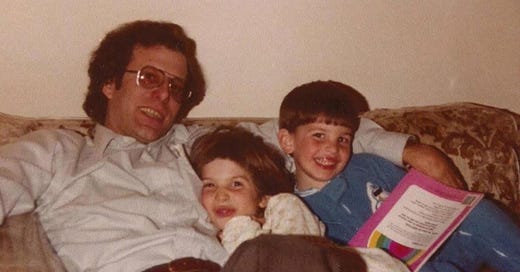What can you remember about your childhood community?
What are the fondest memories that you have?
What was school like for you?
How about extra curriculars?
What did your family do for fun?
You weren’t just raised in a town. You were raised in a system.
And you weren’t just raised in a system. You were shaped by a design. That’s the part no one told you—probably because they never actually knew.
Most people spend their lives responding to structures they didn’t choose.
They mistake their behavior for personality. Their preferences for identity. Their choices for freedom.
But every system teaches something. And every structure makes assumptions about who you are and what you will comply with.
Some places teach survival. Others teach performance.
Some teach silence.
When people say they grew up in a “nice neighborhood,” they usually mean one that was stable enough to dull the senses.
Clean sidewalks, new schools, recreational access, cultural programming.
They’re not lying. They just don’t realize that these aren’t neutral features. These are tools. Each one trains a response.
Order. Obedience. Timeliness. Trust in process. Deference to professionals. Enthusiasm for institutional care.
They call it progress. They call it privilege. But it’s actually called conditioning.
It’s soft programming in a hard world. And it works.
Especially when it feels good.
Especially when your body interprets compliance as safety.
Especially when your nervous system learns to fear anything outside the grid.
You didn’t choose the grid. Your parents didn’t either—not really.
They followed the cues they were given.
Income brackets. School zones. Loan approvals. Crime maps.
What looked like a decision was already determined before they made it.
Some of the towns built in the last fifty years weren’t built just for living. They were built for testing.
Behavioral models. Social integration experiments. Long-term psychological observation.
Celebration, Florida was designed by Disney.
Columbia, Maryland was designed as a “model city” to test integration without unrest.
These weren’t accidents.
They were proposals—prototypes dressed as neighborhoods.
The people who moved into them didn’t know.
They just wanted something better for their kids.
That’s always how it works.
Use the children as the excuse. Feed them into the machine that promised protection.
Measure everything. Record everything. Feed it all back into the algorithm.
And we’re not talking about some sci-fi fantasy. There’s no dark tower here.
Just clean water, curated parks, data-driven education, and every therapist trained in the same scripts.
People don’t rebel in places like this.
They collapse inwards. Quietly. Politely. With gratitude.
And if a child doesn’t comply?
If they start to shake under the weight of that much managed light?
There are early interventions for that.
Emotional support programs.
Diagnostic tools.
“Opportunities.”
The system catches them early now.
They’re not left to drift like I was.
They’re treated, managed, and filed.
But every now and then, someone slips through. Someone born inside the lab that didn’t take to the training.
Someone who didn’t forget.
They may not know exactly what happened. But they know something’s wrong.
They know they’re not crazy, even though everything around them insists they should be.
They know they were shaped—but they remember the part of themselves that couldn’t be molded.
And if you’re still reading, it’s probably you.
You were raised inside a behavioral architecture.
You were watched. Measured. Fed a sequence.
You were praised for adapting.
You were punished when you didn’t.
And somehow, something in you held.
Didn’t it?
You didn’t collapse.
Not all the way.
You dissociated.
You played the part.
Maybe you got sick.
Maybe you got good at disappearing.
But something in you—some code, some seed, some knowing—would not die.
It’s because you didn’t come here to blend in.
You came here to feel every false thing rub against your skin until you could name it in the dark.
And you’ve done that.
You’ve survived what you were never supposed to question.
Which means now, it’s time to choose something else.
Not a rebellion. Not a crusade.
Just a steady return to truth. Yours.
Before they told you who you were.
Because the structures they built are not real.
They’re just very convincing.
But they crack the moment someone inside them decides to remember.
And you remember now.
Don’t you?



